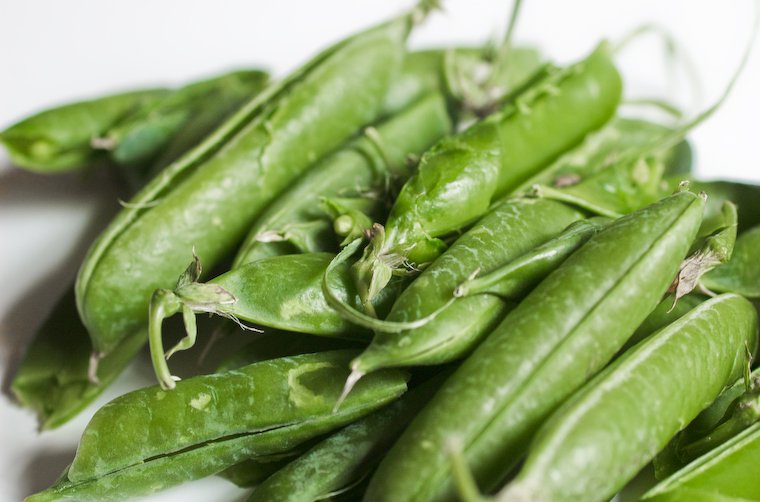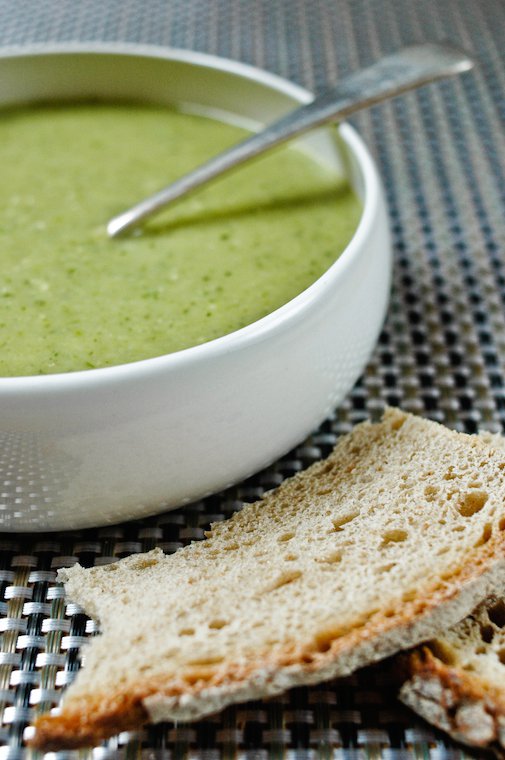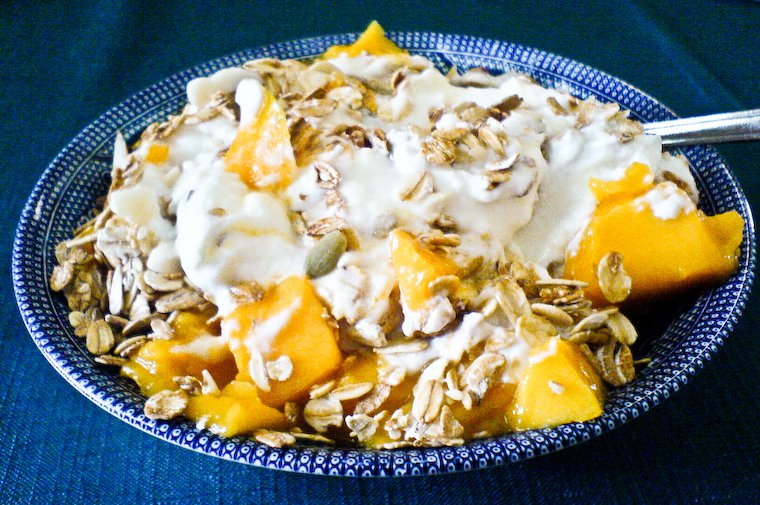As a sequel to my ode to the fresh pea, here is a recipe for chilled pea pod soup, a.k.a. “I have just devoted thirty minutes of my life to the shelling of those peas, and I intend to milk them for all they’re worth” soup.
Like all recipes that propose to use odds and ends that might, in other, less frugal kitchens, end up in the trash, this one delights me to no end — the nose-to-tail philosophy applied to the vegetable kingdom, if you will.
All you need to do is shell and trim your pea pods (I recommend the tear-and-pull technique, which opens the pod and rids it of stem and string in a single gesture), discarding any that is browned or withered, and keeping the ones that look healthy. These you’ll rinse well, drain, and save while you cook the peas in whichever clever way you’ve decided.
The pods don’t stay fresh for very long, so if you’re not absolutely positive you’ll get around to making the soup within a day or so, it is wise to throw them in the freezer (of course I recommend depositing them in some sort of freezer-safe container first, don’t be so literal).
The recipe itself is the simplest thing — an onion, some garlic, a splash of white wine, a whisper of nutmeg — yet I can’t think of a more refreshing start to a late spring dinner than this army green soup, thin-textured and cool, its elusive sweetness brought out by a few drops of hot sauce.








